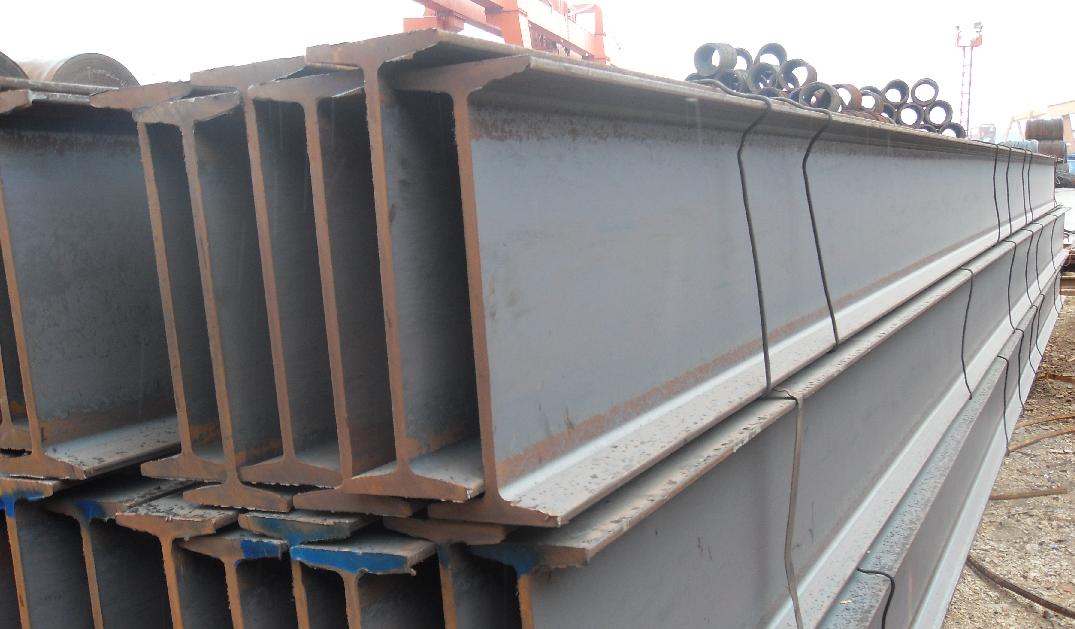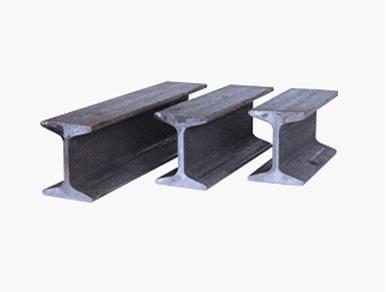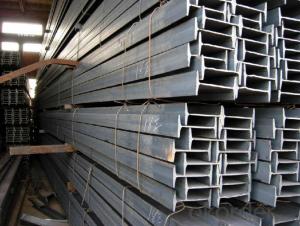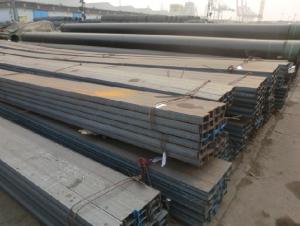Boron Steel I-Beam Element
- Loading Port:
- China main port
- Payment Terms:
- TT or LC
- Min Order Qty:
- 3000 PCS
- Supply Capability:
- 400000 PCS/month
OKorder Service Pledge
OKorder Financial Service
You Might Also Like
OKorder is offering high quality Boron Steel I-Beams at great prices with worldwide shipping. Our supplier is a world-class manufacturer of steel, with our products utilized the world over. OKorder annually supplies products to European, North American and Asian markets. We provide quotations within 24 hours of receiving an inquiry and guarantee competitive prices.
Product Applications:
Boron Steel I-Beams are ideal for structural applications and are widely used in the construction of buildings and bridges, and the manufacturing, petrochemical, and transportation industries.
Product Advantages:
OKorder's Boron Steel I-Beams are durable, strong, and resist corrosion.
Main Product Features:
· Premium quality
· Prompt delivery & seaworthy packing (30 days after receiving deposit)
· Corrosion resistance
· Can be recycled and reused
· Mill test certification
· Professional Service
· Competitive pricing
Product Specifications:
Grade: Q235, SS400, ST37-2, S235JR
Dimensions:
Size: 80mm – 300mm
Length: 6m, 9m, 12m
Packaging: Export packing, nude packing, bundled
FAQ:
Q1: Why buy Materials & Equipment from OKorder.com?
A1: All products offered byOKorder.com are carefully selected from China's most reliable manufacturing enterprises. Through its ISO certifications, OKorder.com adheres to the highest standards and a commitment to supply chain safety and customer satisfaction.
Q2: How do we guarantee the quality of our products?
A2: We have established an advanced quality management system which conducts strict quality tests at every step, from raw materials to the final product. At the same time, we provide extensive follow-up service assurances as required.
Q3: How soon can we receive the product after purchase?
A3: Within three days of placing an order, we will begin production. The specific shipping date is dependent upon international and government factors, but is typically 7 to 10 workdays.
Q4: What makes stainless steel stainless?
A4: Stainless steel must contain at least 10.5 % chromium. It is this element that reacts with the oxygen in the air to form a complex chrome-oxide surface layer that is invisible but strong enough to prevent further oxygen from "staining" (rusting) the surface. Higher levels of chromium and the addition of other alloying elements such as nickel and molybdenum enhance this surface layer and improve the corrosion resistance of the stainless material.
Q5: Can stainless steel rust?
A5: Stainless does not "rust" as you think of regular steel rusting with a red oxide on the surface that flakes off. If you see red rust it is probably due to some iron particles that have contaminated the surface of the stainless steel and it is these iron particles that are rusting. Look at the source of the rusting and see if you can remove it from the surface.
Images:


- Q:What is the difference between hot-rolled and cold-formed steel I-beams?
- The main difference between hot-rolled and cold-formed steel I-beams lies in the manufacturing process. Hot-rolled steel I-beams are formed by heating a steel billet and passing it through a series of rollers at high temperatures. This process gives the steel its characteristic shape and strength, making it ideal for structural applications. On the other hand, cold-formed steel I-beams are formed by bending or rolling cold-rolled steel sheets or strips at room temperature. This process allows for greater precision in terms of dimensions and shapes, making cold-formed steel I-beams suitable for applications where tight tolerances are required. Additionally, hot-rolled steel I-beams generally have a rougher surface finish compared to cold-formed steel I-beams.
- Q:Are steel I-beams suitable for supporting glass curtain walls?
- Yes, steel I-beams are suitable for supporting glass curtain walls. Steel I-beams have excellent strength and load-bearing capabilities, making them a common choice for structural support in various construction applications, including glass curtain walls. The rigidity and durability of steel I-beams ensure the necessary stability and support required for the weight and wind loads of glass curtain walls.
- Q:How do steel I-beams contribute to the overall stability of a building?
- Steel I-beams contribute to the overall stability of a building by providing structural support and load-bearing capabilities. Due to their shape and composition, I-beams are able to distribute weight evenly across their length, allowing them to bear heavy loads. They are commonly used in the construction of buildings because of their high strength-to-weight ratio, which makes them capable of withstanding significant forces and minimizing the risk of structural failure. Additionally, I-beams can be connected together to form a framework, creating a rigid and stable structure that can withstand various external forces such as wind, earthquakes, and heavy loads.
- Q:Can steel I-beams be used in curved structures?
- Yes, steel I-beams can be used in curved structures. While I-beams are typically used in straight applications, they can also be curved to fit the design requirements of a curved structure. This process involves a technique known as cold-bending, where the I-beam is gradually curved to the desired shape using specialized machinery. Cold-bending allows the steel I-beams to be formed into various radii and curves, making them suitable for use in curved structures such as arches, domes, and curved roofs. It is important to note that the bending process may cause some deformation or distortion in the I-beam's cross-section, but this can be mitigated by using proper techniques and ensuring the structural integrity of the curved steel I-beams.
- Q:Can steel I-beams be used for long-span structures?
- Yes, steel I-beams can be used for long-span structures. Steel I-beams are known for their strength and ability to bear heavy loads, making them suitable for long-span structures such as bridges, industrial buildings, and large commercial spaces. The use of steel I-beams allows for the creation of open and spacious areas without the need for intermediate supports. Additionally, steel I-beams can be easily connected and fabricated to create longer spans, providing flexibility in design and construction. The high strength-to-weight ratio of steel also makes it a preferred choice for long-span structures as it allows for lighter structures without compromising on strength and stability. Overall, steel I-beams are widely used in the construction industry for long-span structures due to their durability, strength, and versatility.
- Q:Are steel I-beams suitable for supporting rooftop gardens with water features?
- Steel I-beams can be suitable for supporting rooftop gardens with water features, depending on several factors. Steel I-beams are known for their strength and load-bearing capabilities, making them a popular choice for structural support in construction projects. When considering the suitability of steel I-beams for supporting rooftop gardens with water features, it is important to assess the weight and load distribution of the garden and water features. This includes considering the weight of the soil, plants, water reservoirs, and any additional structures such as ponds or fountains. Steel I-beams are designed to withstand heavy loads, and with proper engineering and calculations, they can be adequately sized and positioned to support the weight of a rooftop garden with water features. However, it is crucial to consult with a structural engineer or a qualified professional to ensure that the steel I-beams are properly designed and installed to handle the specific requirements of the rooftop garden. Factors such as the size and span of the I-beams, the distance between supports, and the overall structural integrity of the building must all be taken into consideration. Additionally, the possibility of water leakage or excess moisture should also be evaluated to prevent any potential damage to the steel beams. Furthermore, regular maintenance and inspection of the steel I-beams are essential to ensure their ongoing suitability for supporting rooftop gardens with water features. Regular checks for signs of corrosion, instability, or any structural issues should be conducted to maintain the safety and stability of the rooftop garden. In summary, steel I-beams can be suitable for supporting rooftop gardens with water features, but it is important to consult with a structural engineer or a qualified professional to ensure proper design, installation, and maintenance to ensure the safety and stability of the structure.
- Q:How do steel I-beams contribute to the overall aesthetics of a building?
- Steel I-beams, although primarily known for their structural strength and support, can also contribute significantly to the overall aesthetics of a building. These beams have a sleek and modern appearance that can add a touch of sophistication and elegance to any architectural design. One way in which steel I-beams enhance the aesthetics of a building is through their clean and minimalistic look. Their slender profile and straight lines create a sense of simplicity and efficiency, which can be particularly appealing in contemporary and industrial-style buildings. Their sleek appearance also allows for a more open and spacious interior, as they can span long distances without the need for additional support columns. Moreover, steel I-beams can be used creatively as architectural elements in exposed structural systems. By leaving the beams visible instead of hiding them behind walls or ceilings, they become a focal point and add a unique visual interest to the space. The raw and industrial aesthetic of the steel I-beams can complement a variety of design styles, from modern and minimalist to rustic and industrial. The use of steel I-beams also provides flexibility in architectural design. They can be fabricated into various shapes and sizes, allowing architects to create intricate and innovative designs. Whether used as load-bearing elements, decorative accents, or as part of an open floor plan concept, steel I-beams offer versatility and adaptability to architectural projects. In addition to their visual appeal, steel I-beams also contribute to the overall sustainability of a building. Steel is a highly sustainable material as it can be recycled indefinitely without losing its properties. By incorporating steel I-beams into the design, a building can showcase its commitment to sustainable construction practices. In conclusion, steel I-beams play a crucial role in the overall aesthetics of a building by adding a modern, minimalist, and industrial touch. Their clean lines, sleek appearance, and versatility allow for innovative architectural designs, while their sustainability further enhances the appeal of the building.
- Q:How do steel I-beams perform in areas with high pollution or chemical exposure?
- Steel I-beams are known for their durability and strength, making them a popular choice for construction projects in various environments. However, in areas with high pollution or chemical exposure, the performance of steel I-beams can be significantly affected. High pollution levels, such as airborne pollutants or corrosive gases, can cause corrosion and degradation of the steel surface. If left untreated, this corrosion can weaken the structural integrity of the I-beams over time. Additionally, chemical exposure, especially to acids or other corrosive substances, can accelerate the corrosion process and further compromise the strength of the steel. To mitigate the impact of high pollution or chemical exposure, several measures can be taken. One common approach is to apply protective coatings to the surface of the I-beams. These coatings act as a barrier, preventing direct contact between the steel and the pollutants or chemicals. Additionally, these coatings can provide resistance against corrosion and extend the lifespan of the I-beams. Another approach is to use stainless steel I-beams, which contain a higher amount of chromium and nickel. This composition makes stainless steel highly resistant to corrosion and chemical exposure. Although stainless steel I-beams are more expensive than regular steel, they are a worthwhile investment in areas with high pollution or chemical exposure. Regular maintenance and cleaning are also essential to ensure the long-term performance of steel I-beams in such environments. Regular inspections can help identify any signs of corrosion or degradation early on, allowing for timely repairs or replacements. In conclusion, while steel I-beams are generally durable, their performance in areas with high pollution or chemical exposure can be compromised. Protective coatings, the use of stainless steel, and regular maintenance are key factors to consider in order to ensure the optimal performance and longevity of steel I-beams in these challenging environments.
- Q:How do I weld 3 steel plates into I-beam?
- Welded I-beam is generally used to take the load of the beam, most of the plate using low alloy high strength steel. The welding process is to prevent the occurrence of cracks, and the bending deformation of the welded I-beam is sure to happen.
- Q:How do steel I-beams contribute to sustainable design practices?
- Steel I-beams contribute to sustainable design practices in several ways. Firstly, steel is a highly recyclable material. At the end of a building's life cycle, steel I-beams can be easily dismantled and recycled, reducing the need for new steel production and minimizing waste. This helps conserve natural resources and reduces the environmental impact associated with steel production. Secondly, steel I-beams offer exceptional strength-to-weight ratio, allowing for efficient structural designs. This means that less steel is required to support a given load, resulting in lighter and more cost-effective structures. The reduced weight also translates to lower transportation and installation energy requirements, minimizing carbon emissions associated with these processes. Moreover, steel is known for its durability and longevity. Steel I-beams have a long lifespan and require minimal maintenance compared to other building materials. This reduces the need for frequent repairs or replacements, saving resources and reducing waste over time. Additionally, steel is resistant to fire, termites, and other pests, eliminating the need for chemical treatments and improving the overall safety and health of the building. This aligns with sustainable design practices that prioritize occupant well-being and minimize the use of harmful substances. Lastly, steel I-beams can be designed with flexibility in mind, allowing for future modifications or expansions. This adaptability reduces the need for demolition and reconstruction, saving both resources and costs. Overall, the use of steel I-beams in sustainable design practices contributes to resource conservation, reduced carbon emissions, improved occupant safety, and long-term cost savings.
1. Manufacturer Overview |
|
|---|---|
| Location | |
| Year Established | |
| Annual Output Value | |
| Main Markets | |
| Company Certifications | |
2. Manufacturer Certificates |
|
|---|---|
| a) Certification Name | |
| Range | |
| Reference | |
| Validity Period | |
3. Manufacturer Capability |
|
|---|---|
| a)Trade Capacity | |
| Nearest Port | |
| Export Percentage | |
| No.of Employees in Trade Department | |
| Language Spoken: | |
| b)Factory Information | |
| Factory Size: | |
| No. of Production Lines | |
| Contract Manufacturing | |
| Product Price Range | |
Send your message to us
Boron Steel I-Beam Element
- Loading Port:
- China main port
- Payment Terms:
- TT or LC
- Min Order Qty:
- 3000 PCS
- Supply Capability:
- 400000 PCS/month
OKorder Service Pledge
OKorder Financial Service
Similar products
New products
Hot products
Hot Searches
Related keywords






























